1924-1929 Recovery and Stability: A-level AQA Germany 1871-1991
1/114
There's no tags or description
Looks like no tags are added yet.
Name | Mastery | Learn | Test | Matching | Spaced |
|---|
No study sessions yet.
115 Terms
Social Democratic party (SPD)
Leaders - Ebert, Scheidemann, Müller
- Left-wing
- Pro-Weimar, socialist
- Largest socialist party
- Formed Weimar Republic
- Won 1928 election
- Largest party in Reichstag: 1912 - 1932
May 1924 - 100 seats (20.5%)
Dec 1924 - 131 seats (26%)
1928 - 153 seats (29.8%)
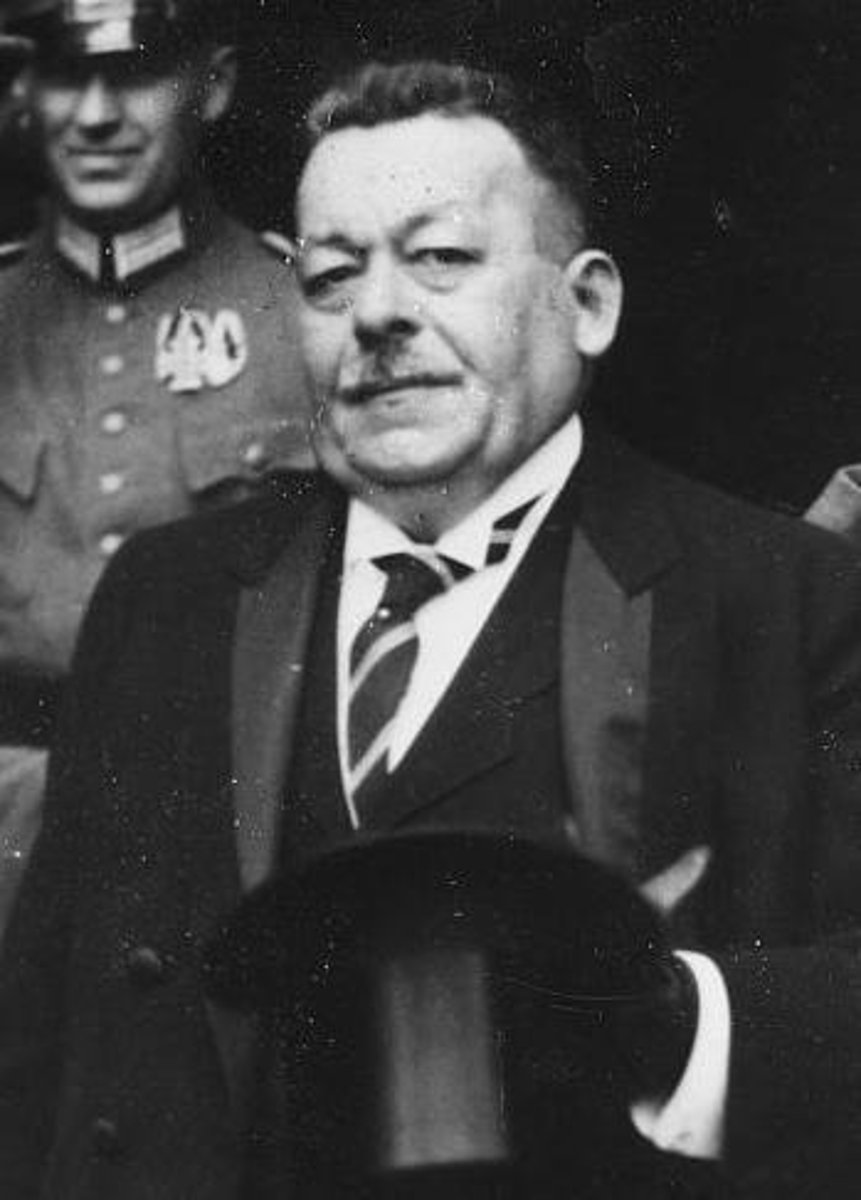
German Nationalist People's party (DNVP)
Leaders - Helfferich, Hugenberg
- Right wing to far-right
- Anti-Weimar, conservative, monarchist
- Formed from coalition of right-wing parties
- Opposed the young plan
- Largest right wing party
- Reformed after 1928 election
May 1924 - 95 seats (19.5%)
Dec 1924 - 103 seats (20.5%)
1928 - 73 seats (14.2%)

German People's party (DVP)
Leaders - Stresemann
- Right-wing Liberal
- Pro-Weimar
- Formed from National Liberals
- Apart of many coalitions
May 1924 - 45 seats (9.2%)
Dec 1924 - 51 seats (10.1%)
1928 - 45 seats (8.7%)
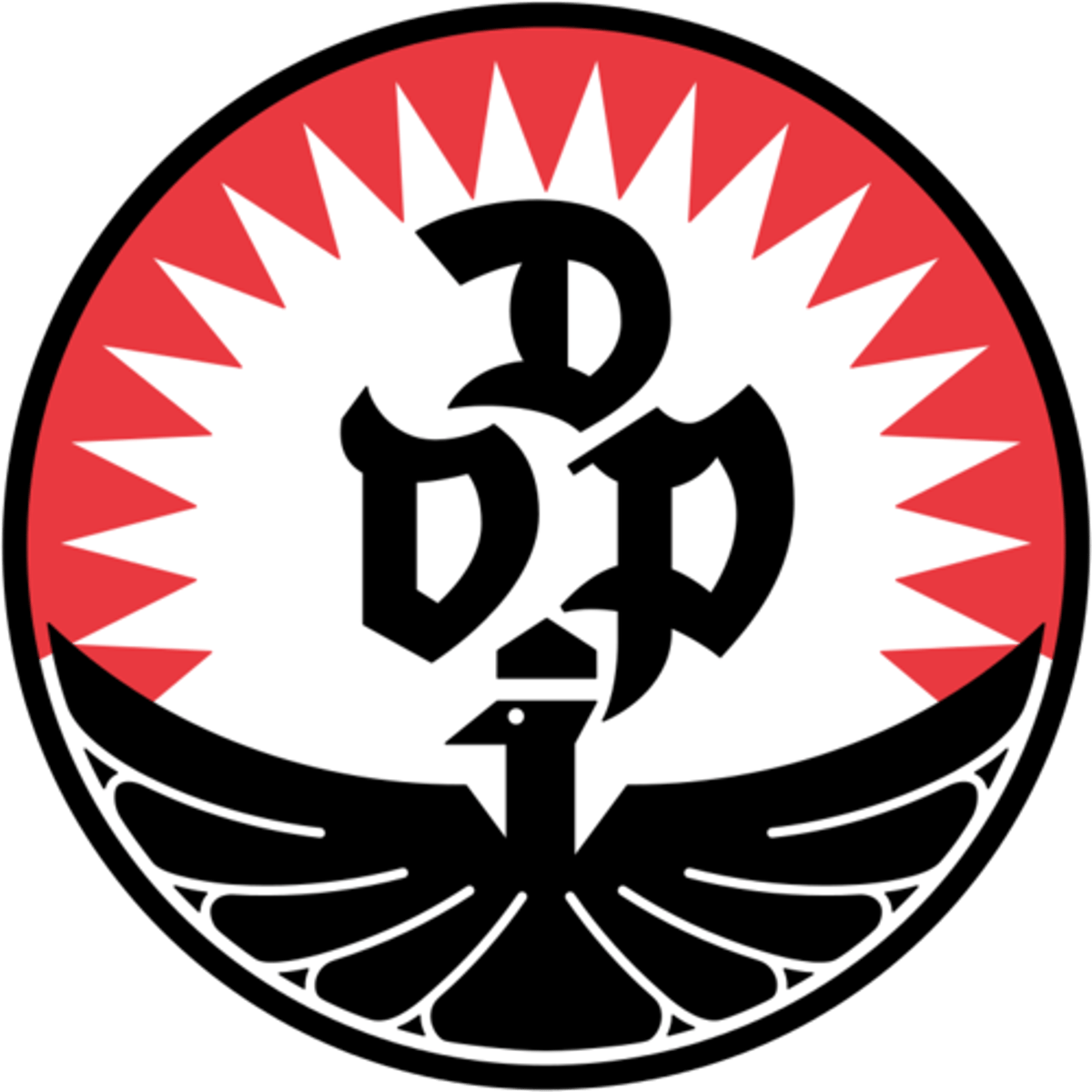
Centre party
Leaders - Erzberger, Brüning
- Pro-Weimar, Catholic, centre-right
- Focused on Catholic issues
May 1924 - 65 seats (13.4%)
Dec 1924 - 69 seats (13.6%)
1928 - 62 seats (12.1%)

Bavarian People's Party (BVP)
Leaders - Speck, Schäffer
- Centre-right
- Split from the Centre party
- Conservatism, catholicism, Bavarian populism
May 1924 - 16 seats (3.2%)
Dec 1924 - 19 seats (3.7%)
1928 - 16 seats (3.1%)
German Democratic party (DDP)
Leaders - Rathenau (assassinated 1922)
- Centre to centre left
- Pro-Weimar, left-wing Liberal, Republican
- Part of many coalitions
- Popular among Jews
May 1924 - 28 seats (5.6%)
Dec 1924 - 32 seats (6.3%)
1928 - 25 seats (4.8%)

Communist party of Germany (KPD)
Leaders - Thälmann, Collective Leadership
- Far left
- Anti-Weimar, Communism, Marxism
May 1924 - 62 seats (12.6%)
Dec 1924 - 45 seats (9%)
1928 - 54 seats (10.6%)

National Socialist German Workers Party (NSDAP)
Leaders - Hitler
- Far right
- Anti-Weimar, racist, fascism, nazism
- Mainly operated in Bavaria
- Fell apart while Hitler was in prison
- Needed mass discontent to be popular, which disappeared when the economy improved
- Hitler was banned in speaking in most states
May 1924 - 32 seats (6.5%)
Dec 1924 - 14 seats (3%)
1928 - 12 seats (2.6%)
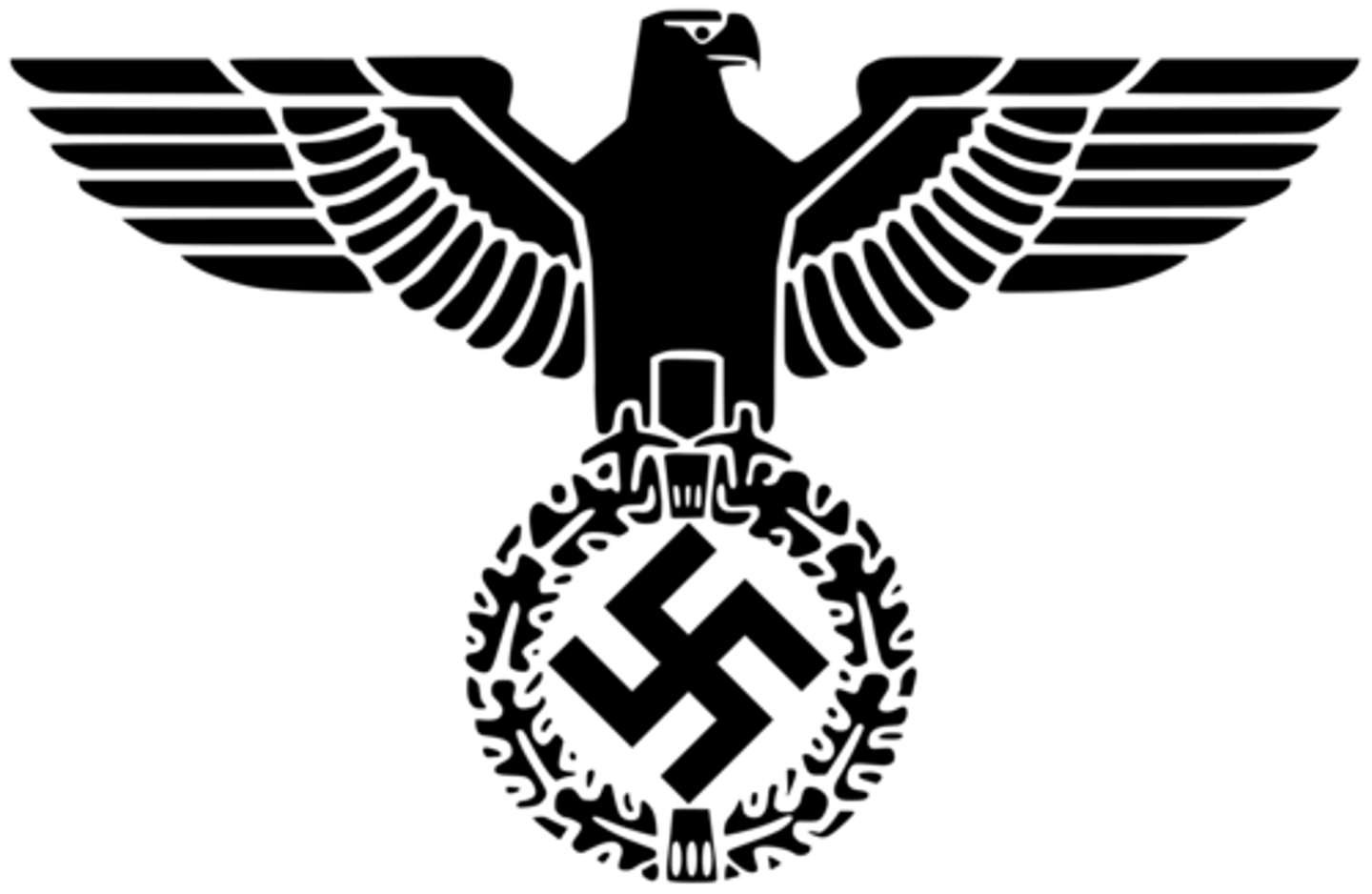
Reichsbanner Schwarz-Rot-Gold
Republican paramilitary organisation
- Got a million members in a year
- Largest paramilitary organisation in Germany
- SPD supporters formed base
- Propaganda encouraged celebrations of republicanism, and honouring the flag & constitution
- Proved republicans could march and fights as much as nationalists could
Gustav Stresemann
- German Foreign minister 1923-1929
- 8th Chancellor August-November 1923
- Preceded by Cuno, succeeded by Marx
- Most influential cabinet minister in Weimar
- Head of National Liberals
- Formed the DVP
- Liberal, democrat, nationalist, monarchist, right-wing
- Resigned after a vote of no confidence
- Called off Passive Resistance
- Ended the Occupation of the Ruhr
- Oversaw the introduction of the Rentenmark
- Ended hyperinflation
- Balanced the budget
- Negotiated the Locarno treaties
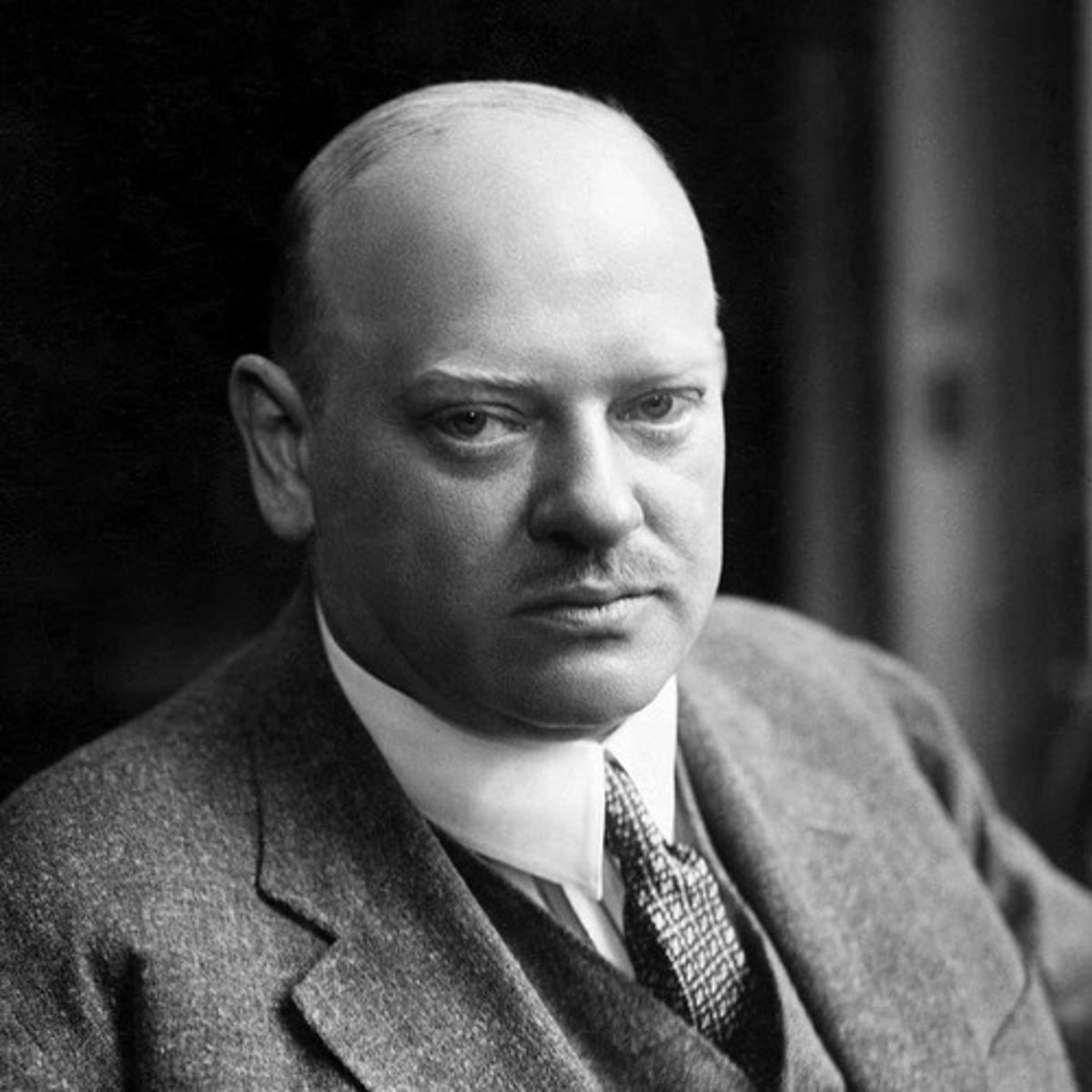
Dawes plan, 1924
- In 1923 Chancellor Stresemann asked the allies to set up a committee to address Germany's reparations problems
- Germany had to pay £6.6 billion of reparations
- Amount paid per year reduced until 1929
- Had to pay 1000 million immediately
- Amount paid to be raised to 2500 million a year over course of 5 years
- Amount to be paid after 1929 based on Germany's economic performance
- 800 million mark loan from USA
- Reichsbank to be controlled by the allies
- Sanctions for non-payments to be decided by allies, not France alone
- France agree to end the Occupation of the Ruhr
- Only passed due to the SPD's backing
£6.6 billion
Total amount Germany had to pay in reparations under the Dawes plan
2500 million
Amount Germany had to pay in reparations per year under the Dawes plan
Charles Dawes
- American Banker
- Head of allied committee into German reparation payments
- Vice-President of USA 1925-1929
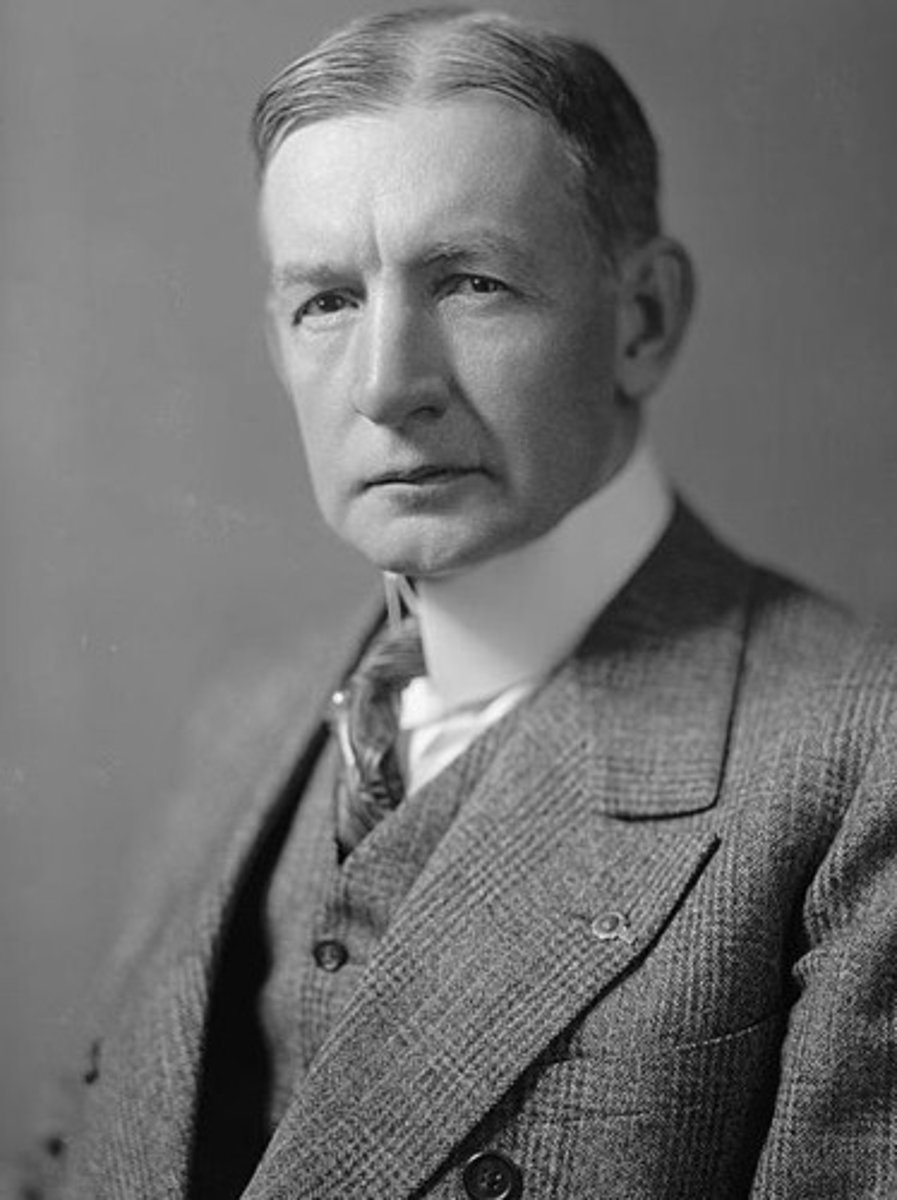
Opposition to the Dawes plan
National opposition, mainly DNVP and smaller groups like the Nazi's attacked the compromise
Benefits of the Dawes plan
- Allied accept Germany's problems
- Loans worth 25.5 billion from USA from 1924-1930
- Increased machinery, factories, houses, jobs
- Ruhr occupation ended
- Better relations with Allies
- Renewed confidence and optimism in Germany
- Inflation was negative in 1926
$25.5 billion
The total value of loans from the USA from 1924-1930
Saxony situation, 1923
An elected socialist government in this state was suppressed by the Reichswehr. Meanwhile Kahr remained in charge of Bavaria despite being apart of the Munich putsch
- SPD outraged and demand equal treatment
- Bourgeoisie parties refuse as it would cause divide in Germany
- Vote of no confidence forces Stresemann to resign
Stresemann's successes
- Ended occupation of the Ruhr
- Introduced rentenmark
- Stabilised currency
- Survived the 1923 crisis
- Dawes plan, 1924
- Locarno treaties, 1925
- Improved relations with the Allies
- Germany joined the League of Nations in 1926
- Popular abroad
Stresemann's failures
- Helped by Allies' willingness to cooperate
- Didn't overturn Versailles treaty
- No German sovereignty in Saar or Rhineland
- Debted to USA
- Disliked by right-wing
- Less popular in Germany
Wilhelm Marx
- Member of the Centre party
- 9th & 11th Chancellor: 1923-1925 & 1926-1928
- Longest serving Weimar Chancellor
- Govt was a coalition of Centre, BVP, DVP, DDP
- First govt was a minority that relied on the SPD
- Capable administrator, open-minded pragmatist, courage to make hard decisions
- Dull speaker & lacked popular appeal
- Reduced civil service pay to pre-1914 levels
- Couldn't compensate savings lost in hyperinflation
- Candidate in 1925 presidential election
First government:
November 1923 - January 1925
- Struggled to pass anything
- Series of defeats led to December 1924 election being called
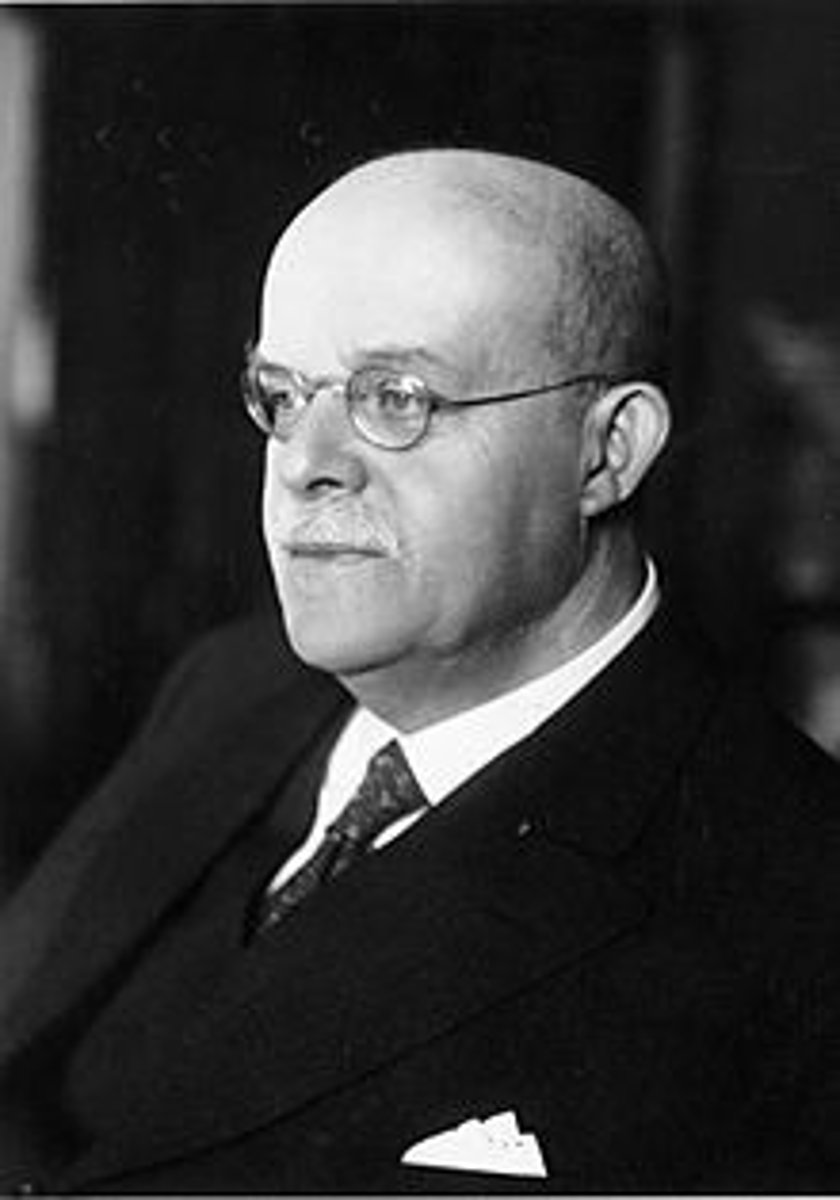
Civil service pay
Reduced to pre-1914 levels by Chancellor Marx as a way to reduce govt spending
May 1924 election
- Only just after the 1923 crisis, situation was still bad which led to extremism
- Extremist left and right parties increase seats
- Centre-right lose out to far-right DNVP
- DNVP 2nd largest
- Nazi's win 6.5% of vote, despite Hitler being in prison
- SPD lose out to KPD
December 1924 election
- Economy was beginning to recover and unemployment was falling, leading to a rise in centrist parties
- KPD lose out to SPD
- Nazi lost out
- Extremist parties lost votes, moderate parties gained
May 1924 election results
SPD - 100 seats (-3)
DNVP - 95 seats (+31)
Centre - 65 seats (+1)
KPD - 62 seats (+58)
DVP - 45 seats (-20)
DDP - 28 seats (-37)
Nazi - 32 seats
BVP - 16 seats
Treaty of Mutual Guarantee, 1925
- One of the Locarno treaties
- Negotiated by Minister Stresemann
- Signed in December 1925
- Germany, France and Belgium agree to respect existing borders
- Britain and Italy to act as guarantors
Treaty of Arbitration, 1925
- One of the Locarno treaties
- Negotiated by Foreign Minister Stresemann
- Signed in December 1925
- Germany, Poland and Czechoslovakia agree to settle disputes peacefully
Impact of the Locarno treaties
- New era of peaceful cooperation
- Agreed western borders
- Stresemann makes it clear that he hoped for a revision in eastern borders in the future
- Bought Germany back on the world stage
- Established Germany as an equal
- Germany was accepted into the League of Nations in 1926
- Improved relations with Allies
- Nationalists saw it as caving to the west and withdrew their support from the govt, causing it to collapse
League of Nations
An international organization formed in 1920 to promote cooperation and peace among nations
- Germany joined in 1926, allowing them to defend their interests
Hans Luther's government
January 1925 - May 1926
- Lost support of the right over the Dawes plan
- Fell over the issue of what colour flag should be flown over German embassies
1925 presidential election
- Ebert died in February
- 17 candidates in first round, none get majority
- SPD and Democrats withdraw candidates to back Marx
- 3 candidates in second round:
Centre's Wilhelm Marx, KPD's Ernst Thälmann, Paul von Hindenburg
- Thälmann split the left-wing vote
- Hindenburg won
Paul von Hindenburg
- Head of the German army in WW1
- President of Germany (1925-1934)
- Election bought Weimar more support from the right
- Right-wing, monarchist, anti-Weimar (until election)
- Not apart of a political party
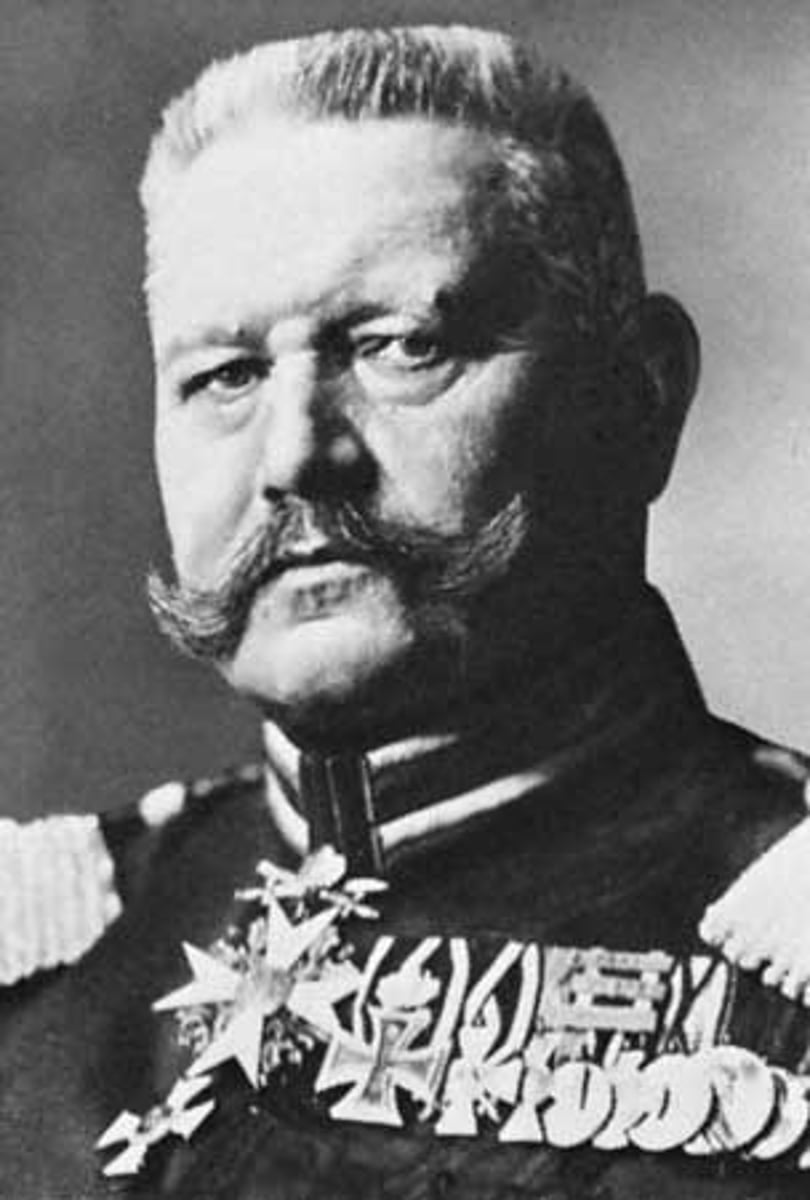
1925 presidential election results
Second round:
Hindenburg (independent) - 48.29%
Marx (Centre) - 45.31%
Thälmann (KPD) - 6.36%
Impact of the 1925 presidential election
- Anti-Weimar Hindenburg became president
- Made the extreme right be more supportive of Weimar
- Hindenburg accepted the Weimar constitution, disappointing the monarchists
Marx's second government
May 1926 - June 1928
- Succeeded Luther's govt
- SPD stood aloof
- Fell due to Scheidemann's speech, but there was no one to replace him, so he formed a new cabinet
- Walter von Keudall, an anti-semite and leader of the Kapp Putsch was appointed Minister of the Interior, indicating a far-right turn
Scheidemann's speech, 1926
- During Marx's 2nd govt
- Exposed illegal financing of armaments
- Exposed links between the Reichswehr and far-right paramilitary groups in order to bypass the 100,000 man limit (Versailles treaty)
- Stated that the KPD knew that illegal weapons were being imported from the USSR
- Marx's govt fell as a result
Unemployment insurance act, 1927
Financed by employer and employee, government paid a loan if funds were short.
Able to deal with moderate unemployment
- Social benefits
- Compulsory
- Covered 17 million workers
- Largest of its kind in the world
- Swamped by the Great Depression
Hermann Muller
- SPD member
- German Chancellor 1928-1930
- Liked by Hindenburg, who worked with the SPD
- Couldn't inspire followers or make an impact
- Passed the bill to build a battleship, despite opposition from his own party
- First SPD member since 1923
- Last parliamentary Chancellor
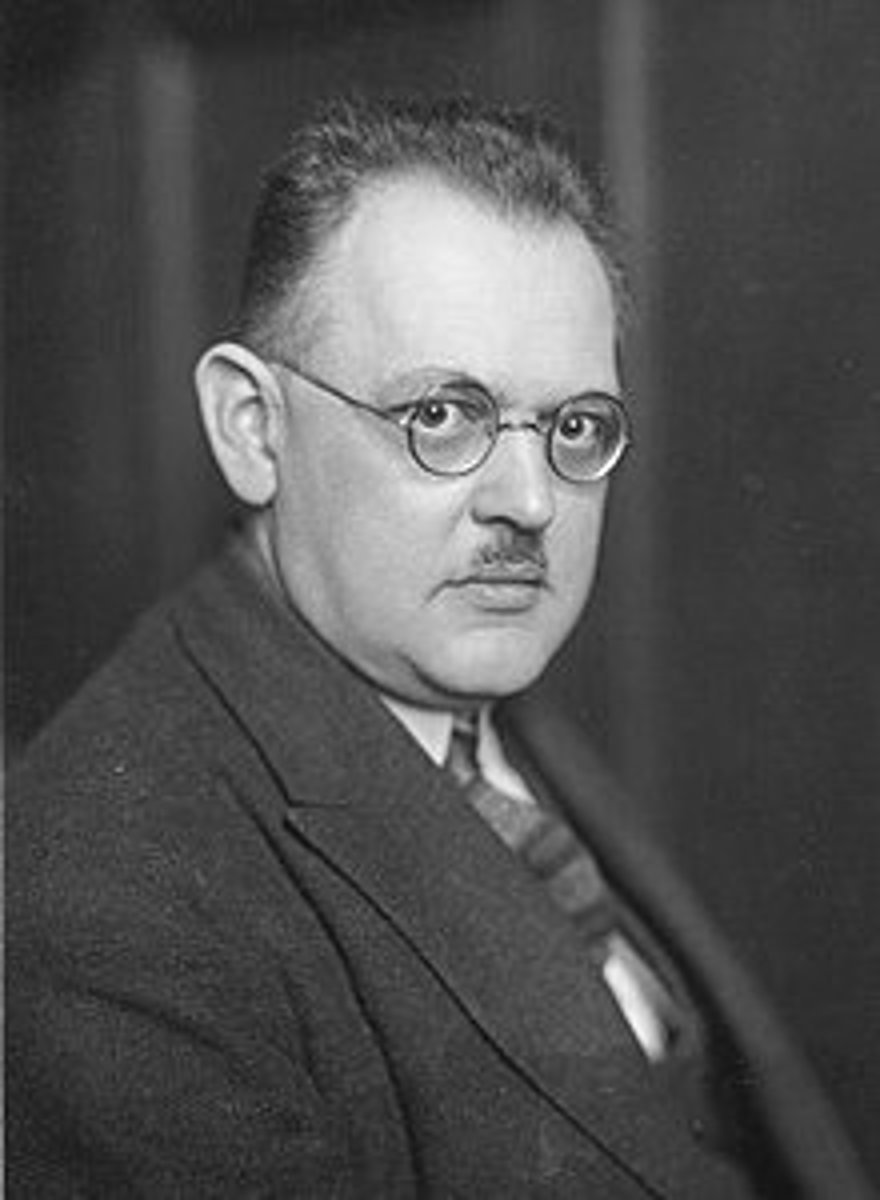
Muller's government
June 1928 - March 1930
- Succeeded Marx's 2nd govt
- Cabinet included SDP, DDP, DVP, BVP, Centre
- Passed the bill to build pocket battleships
1928 election
- Fought mainly over the issue of building pocket-battleships
- SPD and KPD said the money should go towards feeding free-school meals
- Chancellor Müller agrees to pass the bill to build the battleships despite opposition from his own party
- Victory for pro-Weimar parties
- Extremist parties got less than 30% total
- Rise in splinter parties
30%
The total percentage of votes achieved by extremist parties in 1928
Pocket battleship
A smaller version of a battleship designed to get around the Treaty of Versailles
- Main issue in the 1928 election
- Opposed by SPD and KPD
- Müller and 3 cabinet members were the only SPD members to vote in favour
- Approved
1928 election results
SPD - 153 seats (+22)
DNVP - 73 seats (-30)
Centre - 62 seats (-7)
KPD - 54 seats (+9)
DVP - 45 seats (-6)
DDP - 25 seats (-7)
BVP - 16 seats (-3)
Nazi - 12 seats (-2)
Alfred Hugenberg
- Germany's most influential newspaper and film company owner
- Became leader of DNVP in 1928
- Gave financial aid to DNVP, who were broke
- Used media empire to help DNVP
- Made DNVP very anti-Republican
- Owned Universum Film AG, which was dominant in production and distribution of films
- No enthusiasm for critical or controversial themes
DNVP in 1928
Support in election decreases from 20.5% to 14.2% prompting calls for change from within the party.
Some wanted to support Weimar, but Alfred Hugenberg became leader and made the party very anti-republican
Reichswehr
The German army
- General von Seeckt resigned in 1926
- Replaced by General Wilhelm Heye
- He made efforts to improve relations with the govt, who provided more funds than allowed in Versailles
- Little fundamental change, officers were anti-Republican, right-wing, anti-Weimar elites
- Recruitment restricted to nationalist, apolitical, and rural areas
- Lots of paramilitary groups, Freikorps
- Influence of paramilitary groups decreased
- Restricted by Versailles treaty
- A lot of influence and power
Nazi's 1928-1929
- Benefited greatly from RCRY
- Focused on recruiting middle class and farmers
- Farmers flocked in when prices started falling in 1928
- Middle class attracted by National Socialism
- Money started flowing in
1929 - Consistently winning 10-20% in state and local elections in north Germany
National Socialism
Nazi's proposal to attract the middle class
Supposed to create a society that supersedes class conflict and interests to create a harmonious 'racial community'
Middle class and farmers
Focus of Nazi's campaigning after 1928, promising to fix prices and markets of agriculture
1925
- Locarno treaties
- Hindenburg becomes president
- Hitler is released from prison
- Nazi party is reorganised
1926
- Nazi party restructured
- Hitler made Fürher of the Nazi party
- Gregor Strasser challenges Hitler for leadership of the Nazi party but is defeated
- Nazi's departments for youth, students and women set up
1927
- First Nuremberg rally
- Hitler makes himself appear calm, reasonable & rational rather than as a revolutionary fanatic
Young plan, 1929
- Committee of experts to discuss a final plan for reparations
- Timescale for reparations set
- Germany to pay 2000 million mark a year for 59 years
- German government made responsible for the payment
- Germany given back control of its railways and Reichsbank
- France promised to evacuate Rhineland in 1930 rather than 1935
- Accepted by the Reichstag in 1930 after a plebiscite
Owen Young
- Industrialist, businessman
- Lawyer, diplomat
- Vice-chairman of the Dawes committee
- Head of the Young plan
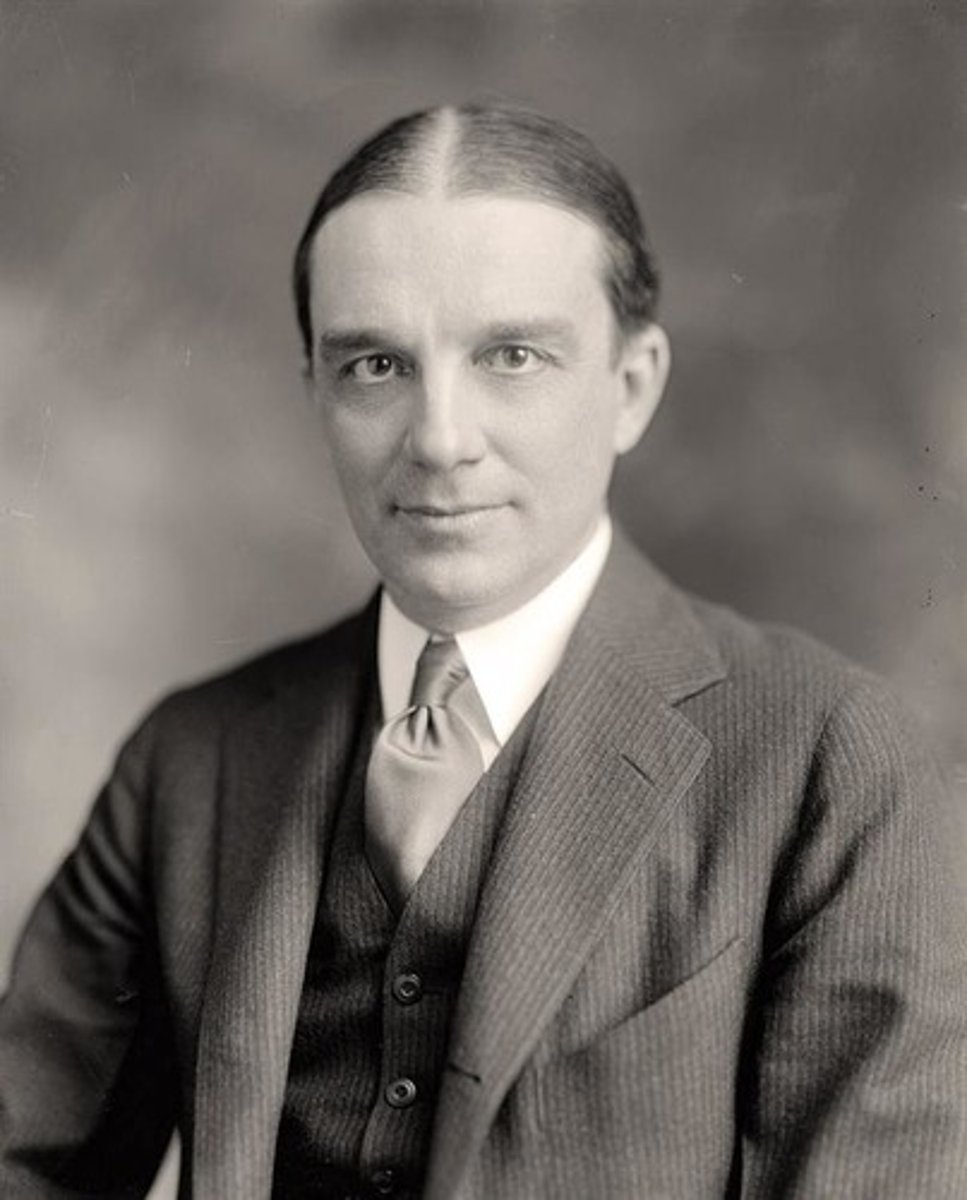
1928
- Nazi's reach 100,000 members
- Reichstag election
- Pocket battleship bill passed
2000 million
Amount Germany had to pay in reparations per year for 59 years under the Young plan
Opposition to the Young plan
- Nationalists rejected the concept of reparations
- Hugenberg creates the RCRY
Effect of the RCRY
- Culminated in a plebiscite
- Greatly benefitted the Nazi's by associating them with the large right-wing parties
- Gave the Nazi's respectability
- Nazi's benefitted from Hugenberg's media empire
Reich Committee for a Referendum to oppose the Young plan
Set up by Hugenberg in June 1929
Included: DNVP, Stahlhelm, Pan-German League, Nazi's
- Hitler was only included for his writing abilities
- Succeeded in getting a plebiscite called
- Under Article 73 of the Weimar Constitution political parties could petition for a referendum
Stahlhelm
- Translates to steel helmet
- Right-wing
- Nationalist, monarchist, anti-communism
- Most members were ex-soldiers
Young plan plebiscite, 1929
- Held in December
- Over the issue of whether or not to approve the Young plan
- 21 million votes needed to reject the plan
- Only 5.8 million against the plan (27.62%)
28%
The percentage of votes that the RCRY received relative to the amount that they needed (21 million) in order to block the Young plan
Weimar's stability
- No major putsches
- Law and order restored
- Economy stabilised
- Activities of paramilitary groups curbed
- Extremist parties lost votes, while moderate parties gained
- Hindenburg's presidency increased right-wing support
- Relationship with foreign powers improved
Weimar's instability, 1924-1929
- Main parties wouldn't compromise
- Constant changes in government
- 7 govts in 6 years, only 2 had a majority
- Longest govt last 21 months
- Inability to unite, even among opposition
- Populations became cynical of party politics, making the Weimar appear weak
- Constantly changing coalitions
- Coalitions often collapsed as the parties couldn't work together
- In debt to US
- Right-wing want more nationalism
- Versailles treaty still in place
- Instability within parties
7
Number of governments from 1924-1930
List of Chancellors
Stresemann: August 1923 - November 1923
Marx: November 1923 - January 1925
Hans Luther: January 1925 - May 1926
Marx: May 1926 - June 1928
Müller: June 1928 - March 1930
40%
Rise in exports between 1925 and 1929
Economy 1924-1929
- Stability thanks to Dawes plan and rentenmark
- 25.5bn marks in foreign capital flowed in
- Foreign investors attracted by low interest rates
1928 - Production levels exceeded 1913
- More efficient production techniques, particularly in coal & steel
1925 - 1929: 40% rise in exports
State arbitration scheme, 1924
- Designed to prevent strikes
- Workers used Trade Unions to argue their case to neutral judges who were sympathetic to workers
- Real wages rose every year from 1924-1929
- National income in 1928 was 12% than in 1913
Social welfare schemes
- Generous pension and sickness benefits
- Unemployment insurance, 1927
- Better health insurance meant better
- Public spending on housing
- State subsidies for construction of local amenities (parks, schools, sport facilities)
Housing
1929 - State spending 3300% higher on this than in 1913
- Improved quality of homes
Economic successes
1928 - Industrial output exceeded 1913
1925-1929 - 40% rise in exports
- Improved social welfare
- Increased affluence
- Increasing number of cars
- Growth of cinema suggests people had more disposable income
- Growth of shipping, cement, car, plane industries
- Young plan, 1929
- Germans didn't want to save due to hyperinflation
- 200 war materials corporations set up during WW1
- Central Purchasing Company set up during WW1 to maintain trade
- Large industrial complexes bring tech and efficiency
- Rationalisation
- Heavy industry recovers slightly
- Chemical industry benefits
Economic weaknesses
- Recovery was largely deceptive
- Growth was superficial
- Relative stagnation and slow growth, 1924-1929
- Unemployment reached 3 million (15% of workforce), 1929
- Agriculture suffers a lot due to foreign imports and low yields
- Over reliant on foreign credit
- Short term loans from abroad made domestic development difficult
- Growth was erratic, not everyone benefited
- Govt spending too much but not investing
- More imports than exports
- Fall in world prices hurt farmers, 1928
- Per capita income of farmers was 44% below the national average
- Govt spending to much, but not investing
- Wage levels rising, productivity wasn't
- Compulsory wage arbitration and higher employment contributions to social insurance increased costs
- Lower investment
- Sluggish economy
- Germans didn't want to invest due to hyperinflation
- Treaty of Versailles
- Smaller industries had less capital & small markets
- Reliant on short term loans
15%
Percentage of the German workforce unemployed in 1929
44%
Per capita income of farmers was this percentage below the national average
Kurt Borchardt
- German economic historian
- Claimed that 1924-1929 were years of slow growth and 'relative stagnation'
- Argued Germany was living beyond its means
- Claimed unbalanced budget and rising workers wages were a result of government intervention in the labour market
- Thought the govt had too much sympathy towards organised labour
- Claimed that the Weimar economy was 'a sick economy which could not possibly have gone on in the same way even if the world depression had not occured'
Farmers
- 33.3% of population
- Anti-Republican
- Focus of Nazi's recruitment efforts (along with middle class)
- Flocked to Nazi's when prices fell in 1928
- Benefitted from doubling of prices during WW1
- Partially helped by subsidies and protective tariffs
- Hyperinflation relieved burden of debt
- Saw the Weimar as serving the selfish interests of the industrial proletariat and urban consumers
- Per capita income was 44% below the national average
- Anxious about urbanisation and cheap imports
- Forced to put up with stringent govt rules
- Heavy taxes post-1923
- Heavy debt due to high costs of resources (seeds, fertiliser, machines, etc)
- Reliant on expensive short term loans
- Series of natural disasters
- Crisis from 1928 when world prices dropped
- Became more militant as they thought they were being neglected by Weimar
Reichsbank
- Controlled by allies under Dawes plan
- Banned from dropping interest rates below 5% in order to prevent hyperinflation happening again
- High interest rates were attractive to foreign investors
-Returned to allied control under the Young plan
Rationalisation
Making a company, process, or industry more efficient, especially by dispensing with superfluous personnel or equipment.
- Brings new technology
- Brings better management
- Lost surplus labour
- Helped improve German industry
Elite
- 5% of the population, 1929
- Rich industrialists, entrepreneurs, financers, landowners, Junkers
- Weathered inflation using material assets
- Anti-Weimar, authoritarianism
- Scared of working class
- Lost titles
- Undermined by demilitarisation
- Landlords lost to hyperinflation (fixed rents)
- Remained very influential
- Dominated the military
- Large control over government
- Industrialists could lend out cheap loans during hyperinflation
- Many increased wealth
- Industrialists didn't integrate with Junkers
Middle class
- 33% of population
- Doctors, lawyers, professors, civil servants, white-collar workers
- Trapped between upper and working class conflicts
- Wanted stability and end to class conflict
- Wanted sense of community
- Accustomed to the idea of Germany being an 'outstanding cultural nation' with a heritage that merited protection
Working class
- Over 50% of the population
- Disunited, but had some sense of comradeship
- Very varied
- Religious, regional, and skill level differences
- Wanted socialism
- Still poor
Women
- 50% of the population
- Gained equal rights under Weimar constitution
- More leisure time & sexual independence
- Families became smaller
- Workers replaced by men at end of war
- Many had conservative attitudes towards roles
- Media created idea of 'new woman'
- Moved from farmers & domestic servants to white collar & public employment
1907 - 31.2% of workforce were this
1925 - 35.6% of workforce were this
- Generally stayed in the evening while their husbands went out
Urban environments
- Construction of parks, libraries, transport, and housing schemes
- Reforms often implemented by Social Democrats
- Optimistic view of hygienic management of cities
- Berlin had efficient infrastructure, welfare intervention, domesticity, leisure pursuits
- Mass housing projects
Anti-urbanism
- Associated with right-wing volkisch groups
- Wanted return to working and living on the land
- Wanted 'Germany's national rebirth'
- Some extreme left saw cities as steeped in the evils of capitalism
- Saw rural communities as the route to classless peaceful society
Volkisch groups
- Right-wing ethno-nationalist organisations
- Anti-semitic, conservative
36%
The percentage of the workforce that was female in 1925
Jews
- Many were middle class
- Blamed for the end of the war
- Anti-semitism fueled by right-wing
Minority groups
Danes, Poles, Roma, Sinti
- Well assimilated
Education
- Focus on obedience & authority
- Monarchist ideals
- Teachers & professors were right-wing
- Target of left-wing reforms
- Reforms had limited success
- More secular & inter-denominational schools built
- SPD clashed with Centre party
- No adequate scholarship system prevented gifted working class attending secondary education
1930 - Only 7% of secondary schools pupils were working class
- Some experimentation
7%
The percentage of secondary school pupils that were working class in 1930
Education experimentation
- Led by Austrian philosopher Rudolf Steiner
- Waldorf schools, first in 1919
- Stressed the role of imagination in learning and integrating intellectual, artistic and practical activities
Reformers aims for education
- Break down religious barriers
- End monopoly by middle classes on secondary grammar and higher education
- Develop a democratic consciousness among teachers
Society
- Very varied
- Lots of division and antagonism
- Little class solidarity
- Divisions had been disguised by imperialism and monarchy, but that disappeared
Weimar Culture
Flourished in all forms - literature, art, drama, architecture, music, dance, cinema
- State fostered artistic pluralism
- Constitution against censorship
- Public funding of Avant Garde
- Diverse, cosmopolitan and innovative
- Very divisive
- Hated by right-wing
- Division
- Reflects division in politics
- Helped to destabilise Weimar
- Few defenders among cultural & intellectual elite
- Many were alienated by changes
- Experimentation & liberation didn't create stability
Literature and drama
- Modernised
- Included frankness, sexual matters, social comments
- Often critical of the world
- Many plays in Berlin
- Concentrated on a range of social issues
- Agitprop
- Most progressive theatres in Europe
Agitprop
Agitation and propaganda
Drama movement started by Bertolt Brecht to add elements of public protest and persuasive politics to theatre to make it progressive and make an activist audience
Bauhaus movement
Architectural movement started in Germany combining fine arts with manufacturing, technology, emphasizing the craftsmanship lost in the industrial age
- Emphasised functionality of design and freedom from the past
- Steel, glass, concrete
- Meant to give a greater insight into reality and make life easier, especially for women
- Spread across Germany
- Walter Gropius, Mendelsohn, Le Corbusier
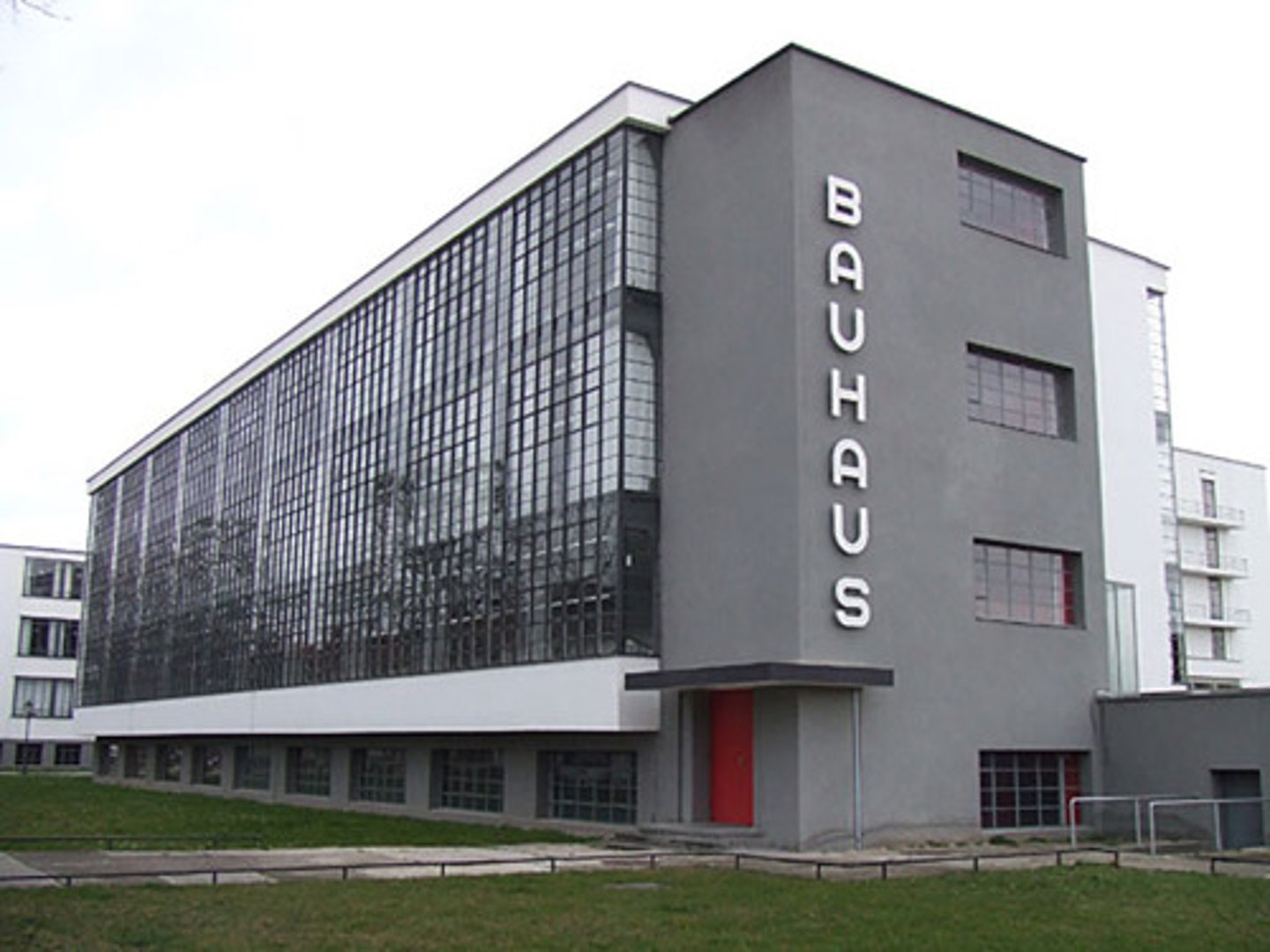
Visual art
- Highly influenced by expressionism
- Neue Sachlichkeit movement
- Against romanticism, fantasy, subjectivity, impulse
- Most creators were left-wing
- Showed social hypocrisy of plight of the poor
- Portrayed a sense of realism and a criticism of life, called Verism
- Otto Dix, George Grosz, Max Beckmann, Käthe Kollwitz
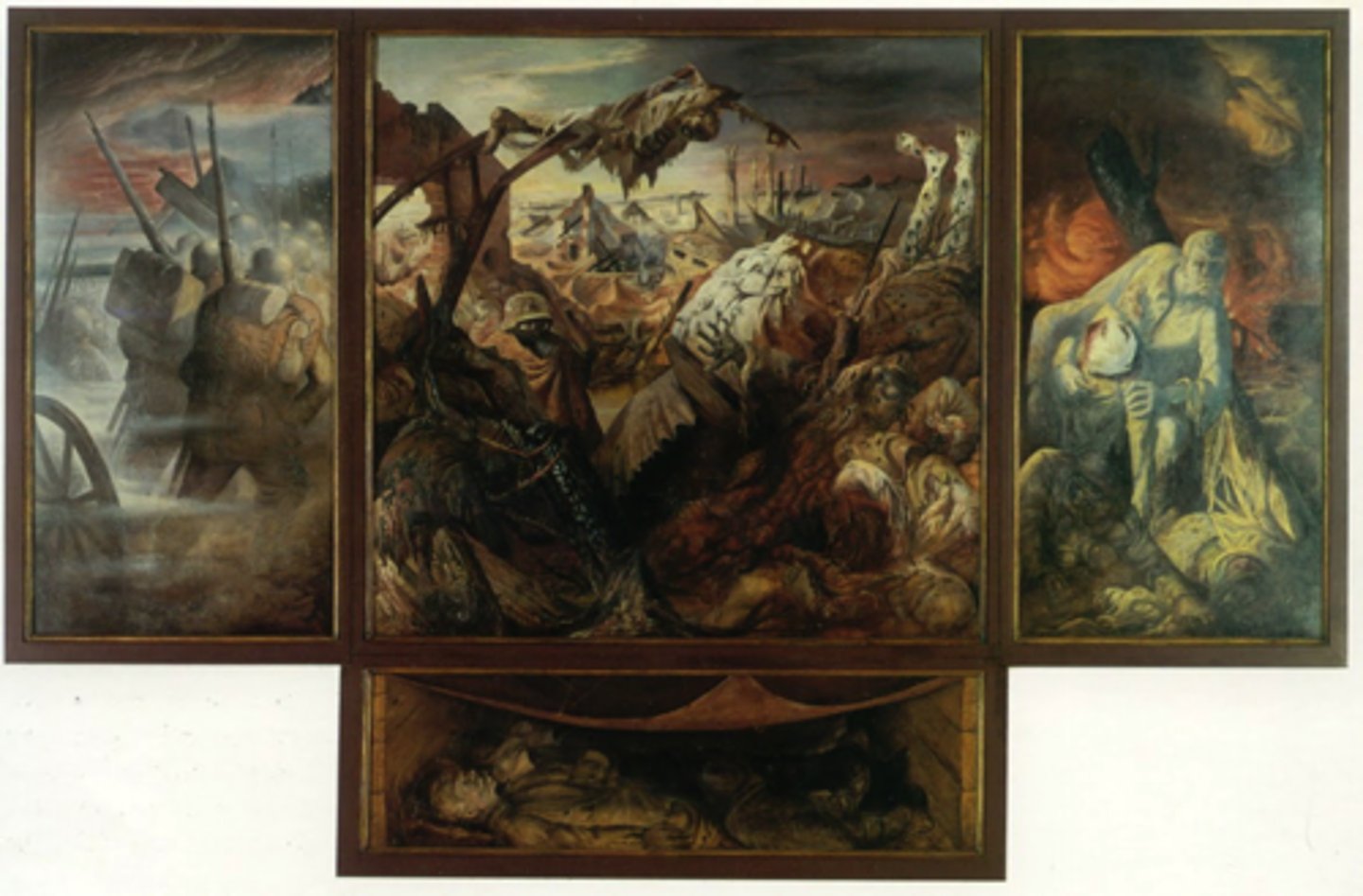
Neue Sachlichkeit
Translates to New Objectivity
Major undercurrent of art in Weimar
- Flourished in Berlin, Cologne, Dessau, Dresden, Dusseldorf, Hanover, Karlsruhe, Munich